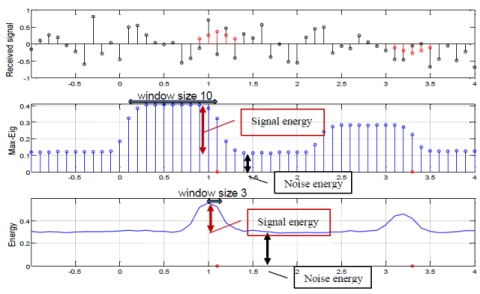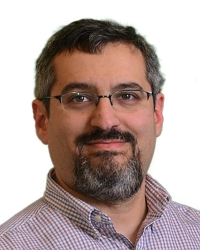TR2012-046
Non-coherent ToA Estimation for UWB Multipath Channels using Max-eigenvalue Detection
-
- , "Non-coherent ToA Estimation for UWB Multipath Channels using Max-eigenvalue Detection", IEEE International Conference on Communications (ICC), June 2012.BibTeX TR2012-046 PDF
- @inproceedings{Shi2012jun,
- author = {Shi, W. and Annavajjala, R. and Orlik, P.V. and Molisch, A.F. and Ochiari, M. and Taira, A.},
- title = {{Non-coherent ToA Estimation for UWB Multipath Channels using Max-eigenvalue Detection}},
- booktitle = {IEEE International Conference on Communications (ICC)},
- year = 2012,
- month = jun,
- url = {https://www.merl.com/publications/TR2012-046}
- }
- , "Non-coherent ToA Estimation for UWB Multipath Channels using Max-eigenvalue Detection", IEEE International Conference on Communications (ICC), June 2012.
-
MERL Contact:
-
Research Area:

Abstract:
Due to the fine delay resolution in ultra-wideband (UWB) wireless propagation channels, a large number of multipath components (MPC) can be resolved; and the first arriving MPC might not be the strongest one. This makes time-of-arrival (ToA) estimation, which essentially depends on determining the arrival time of the first MPC, highly challenging. In this paper, we consider non-coherent ToA estimation given a number of measurement trials, at moderate sampling rate and in the absence of knowledge of pulse shape. The proposed ToA estimation is based on detecting the presence of a signal in a moving time delay window, by using the largest eigenvalue of the sample covariance matrix of the signal in the window as the test statistic. We show that energy detection can be viewed as a special case of the eigenvalue detection. Maxeigenvalue detection (MED) generally has superior performance, due to the following reasons: 1) MED collects less noise, namely only the noise contained in the signal space, and 2) if multiple channel taps fall into the time window, the MED detector can collect energy from all of them. Simulation results confirm that MED outperforms the energy detection in IEEE 802.15.3a and 802.15.4a channels. Finally, the selection of the threshold of the MED is studied both by simulations and by random matrix theory.
Related News & Events
-
NEWS ICC 2012: publication by Philip V. Orlik and others Date: June 10, 2012
Where: IEEE International Conference on Communications (ICC)
MERL Contact: Philip V. Orlik
Research Area: Signal ProcessingBrief- The paper "Non-coherent ToA Estimation for UWB Multipath Channels using Max-eigenvalue Detection" by Shi, W., Annavajjala, R., Orlik, P.V., Molisch, A.F., Ochiari, M. and Taira, A. was presented at the IEEE International Conference on Communications (ICC).
